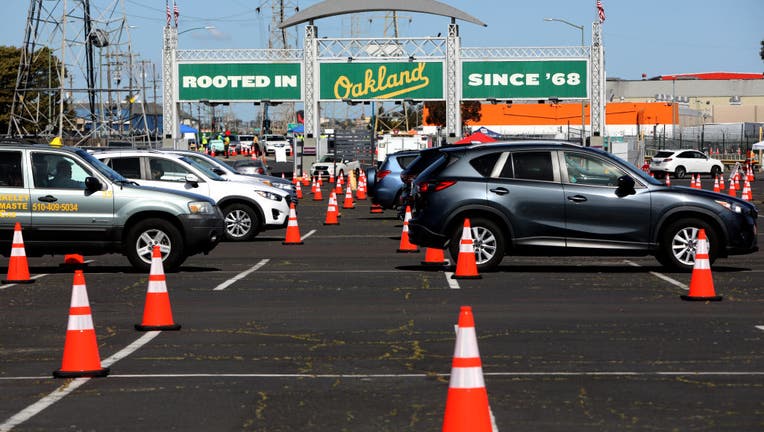Alameda County expands vaccine eligibility to 16 and older in high-need ZIP codes

OAKLAND, CA - MARCH 25: Vehicles wait in line in observation lanes at the Oakland Coliseum vaccination site on Thursday, March 25, 2021, in Oakland, Calif. The Coliseum vaccination site is only scheduled to be open for eight weeks, which means it wil
OAKLAND, Calif. - Alameda County on Wednesday expanded eligibility for the COVID-19 vaccine to the 16 and older age group in some of its hardest hit, high need ZIP codes.
The ZIP codes cover parts of Oakland, Hayward, San Leandro and San Lorenzo. This is in advance of the state's April 15 eligibility expansion for those who are 16 to 49.
The ZIP codes are as follows: 94601, 94603, 94605, 94606, 94607, 94621, 94541, 94544, 94545, 94577, 94578, 94580.
30% of the county's eligible population is fully vaccinated and 47% have received at least one dose of the vaccine, according to the latest health department data.
42% of whites have received at least one dose in Alameda County compared to 31% of the Black/African American population. That number is even lower for Latinos at 26%.
This week, Governor Newsom's office announced an agreement with Alameda and Contra Costa counties to extend the mass vaccination site at the Oakland Coliseum with FEMA staff being phased out by early May. The site will be able to administer 6,000 doses a day.
As of Wednesday, Alameda County has 84,027 COVID cases and has seen 1,432 deaths. These figures include information from the Berkeley Health Department.
CURRENTLY ELIGIBLE FOR VACCINATION:
- Persons ages 50+ (please complete our notification form to hear when appointments are available)
- Persons ages 16+ who are deemed to be at the very highest risk due to complex health conditions
- Persons ages 16+ who LIVE in one of the following zip codes: 94601, 94603, 94605, 94606, 94607, 94621, 94541, 94544, 94545, 94577, 94578, 94580
- Essential workers in healthcare, food/agriculture, education/childcare, and emergency services
- Persons who are deemed to be at the very highest risk due to complex health conditions
- Persons who work, reside, or recently resided in a high-risk congregate living setting such as a correctional facility, homeless shelter, or behavioral health facility
- Persons currently experiencing homelessness (sheltered or unsheltered)
- Public transportation personnel, including airport and commercial airline workers (excludes private planes)

